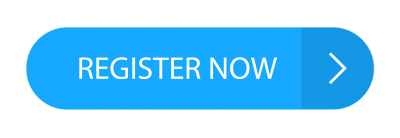THE USE OF THE CANVA APPLICATION AS A DIGITAL-BASED TEACHING MEDIUM IN LEARNING INDONESIAN LANGUAGE AND LITERATURE: FABLE TEXT WRITING MATERIAL Anggi Bela Komara1 , Agus Iryana2
Abstract
Keywords
Full Text:
PDFReferences
Abidin, Y., Mulyati, T., & Yunansah, H. (2021). Pembelajaran literasi: Strategimeningkatkan
kemampuan literasi matematika, sains, membaca, dan menulis. Bumi Aksara.
Eliastuti, M., Amelia, R., Batubara, F. M., Nuraini, N., Fardiah, N., Damayanti, A., ... & Putri, R. A.
(2023). Peningkatan Kemampuan Menulis dan Literasi Digital Peserta Didik SMP Negeri 66
Jakarta Melalui Pelatihan Penggunaan Aplikasi Canva. Archive: Jurnal Pengabdian Kepada
Masyarakat, 2(2), 206-218. https://doi.org/10.55506/arch.v2i2.62
Harahap, R. (2022). Fabel. GUEPEDIA.
Megawati, P., Andriani, N., & Yulia, W. A. (2020). Fabel dan legenda.
Nurgiyantoro, B. (2018). Teori Pengkajian Fiksi. Yogayakarta: Gadjah Mada University Press
Ramdhan, M. (2021). Metode Penelitian. Surabaya: Cipta Media Nusantara.
Rizanta, G. A., & Arsanti, M. (2022, July). Pemanfaatan aplikasi Canva sebagai media
pembelajaran masa kini. In Prosiding Seminar Nasional Daring: Pendidikan Bahasa dan
Sastra Indonesia (Vol. 2, No. 1, pp. 560-568).
https://prosiding.ikippgribojonegoro.ac.id/index.php/SPBSI/article/view/1381
Siswanjaya, S. (2021). Penggunaan Canva pada Pembelajaran Berbasis Proyek untuk
Meningkatkan Keterampilan dan Motivasi Menulis Siswa. Jurnal Didaktika Pendidikan
Dasar, 5(2), 421-442. https://doi.org/10.26811/didaktika.v5i2.259
Suwandi, Sawiji (2018). PEMBELAJARAN BAHASA INDONESIA YANG MENCERDASKAN
DAN TANGGUNG JAWAB MENGHASILKAN GENERASI LITERAT. Jurnal
Pendidikan Bahasa dan Sastra Indonesia Volume 13 Nomor 2 Tahun 2018.
https://doi.org/10.25134/fjpbsi.v13i2.1562
Warsiman. 2016. Membumikan Pembelajaran Sastra yang Humanis. Malang: UB Press
Yanti, N. I., Nurhayati, E., & Kartiwi, Y. M. (2023). PENGGUNAAN MODUL ELEKTRONIK
BERBANTUAN CANVA PADA PEMBELAJARAN TEKS FABEL DI SMP KELAS VII
KOTA CIMAHI. Parole: Jurnal Pendidikan Bahasa dan Sastra Indonesia, 6(5), 495-508.
https://doi.org/10.22460/parole.v6i5.17616








.png)